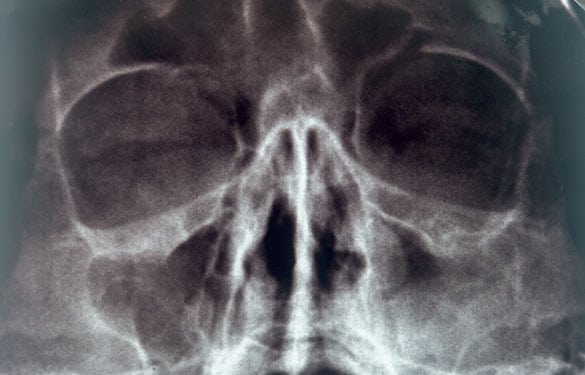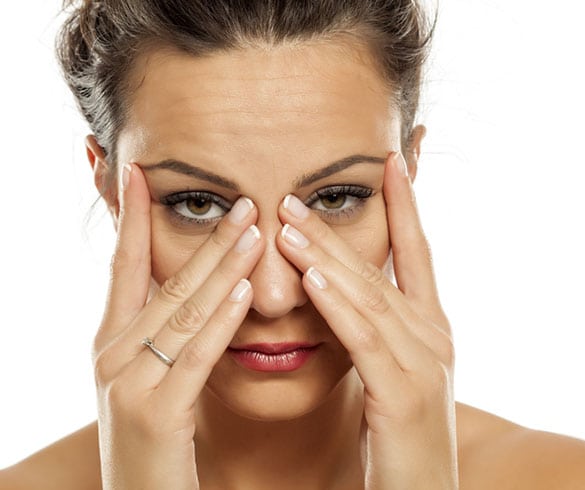
From a Latin term meaning "curve" or "fold," sinuses are hollow cavities around your nose and eyes.
While often associated with the nose and its related passages, sinuses extend to the forehead and into cheekbones on both sides of the face. Interconnected, these tissue-lined cavities are coated with mucus that serves to maintain moisture for tissues and trap bacteria.
- Linked to the body’s airways, sinuses are basically an air filtration system.
- If any of the sinuses are blocked or congested, you may be referred to an ear, nose, and throat doctor to determine the reason and find an appropriate treatment.
Common Sinus Conditions
Sinuses are sometimes affected by bacteria, viruses, or fungi. If the result is severe inflammation that triggers excessive mucus production, discomfort may be noticed around the eyes, in cheeks, or around the forehead. This is referred to as acute sinusitis. If the sinus cavities are chronically inflamed, it’s a condition known as chronic sinusitis (chronic rhinosinusitis). Airflow may be blocked if nasal septum ridges are enlarged (turbinate hypertophy). Sinuses-related conditions or abnormalities may also include:
- Deviated septum: The structure that divides that nose is positioned too far in one direction.
- Hay fever: Allergens such as pollen, pet dander, and dust mites irritate the sinus membranes and contribute to sneezing, itching, and other symptoms.
- Nasal polyps: Hay fever, asthma, and other conditions that can affect sinus cavities sometimes contrite to the development of small growths called nasal polyps.


Sinus Tests and Evaluations
If you have symptoms that suggest something is affecting your sinus passages, several tests are typically done to make an accurate diagnosis. Various sinus cavities may be examined visually with a nasal endoscopy, a procedure involving the use of a special tube with a light and camera attached. It allows for a better view of narrow passageways than what’s possible with an anterior rhinoscopy, since the endoscope is thinner. Diagnosis of sinus problems sometimes involves allergy tests and sinus cultures. X-rays may be taken to check for issues with bones adjacent to the sinus cavities. MRIs and CT scans produce detailed images of the soft tissues within this area.
Treatments for Sinus-Related Conditions
Antibiotics are often prescribed to treat sinus infections, particularly bacterial sinusitis. If hay fever is contributing to tissue swelling, antihistamines may help control symptoms. Sinus congestion and postnasal drip may be managed with decongestants. These medications work by constricting blood vessels, which reduces mucus production and congestion. If symptoms are primarily due to lack of moisture in sinus passageways, nasal saline spray can help resolve this problem. Nasal steroid sprays are often used to ease tissue swelling and prevent polyp regrowth following surgical removal of nasal polyps. Severe blockages may be resolved with sinus surgery.
Breathing healthy indoor air is one way to keep sinuses healthy, especially if you have a history of experiencing various sinus-related problems. Avoiding anything that significantly irritates sinus tissues can also be helpful. If you have allergies or issues with recurring sinus infections, the use of medication and taking steps to avoid certain triggers can minimize the risk of experiencing difficulties with sinus drainage, congestion, and respiration.
Even minor inflammation, swelling, and abnormal drainage should be reason enough to see a specialist if these problems affect quality of life. Doing so could also prevent serious sinus-related issues from developing.


